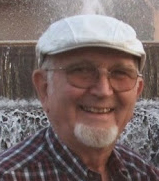Click to join the conversation with over 500,000 Pentecostal believers and scholars
Click to get our FREE MOBILE APP and stay connected
Luchen Bailey | PentecostalTheology.com



History of the Christian Church
Lesson # 6
http://andnowyouknowmore.blogspot.com
Today we pick up with the early church leader being scattered.
This was Gods way of scattering (disbursing them) to spread the message.
Apostolic leadership appointed leaders, laid hands on them and sent them out.
Luke 10:4, They were sent them out and told, not to take any money. No wallet, No credit cards, & leave the check books at home.
God promised to supply the needs where they went.
Phil. 4:19 “supply all our needs according to his riches in glory”.
Years age while applying for a loan to build a new church in Fresno, CA. I went to a local bank that I had done personal business with. The Vice President, Mr. Green, ask me how we were going to make the payment, I replies “ I have a rich Jewish friend that supplies all we need, His name is Jesus.” He didn’t know my Jewish friend so we didn’t get the loan from him. We did get a better loan from another place.
God will supply all of our needs.
The disciples were sent out.
Acts 11:19 “Now they which were scattered abroad upon the persecution…)KJV
Last week we covered the church leaders being scattered because of persecution.
Not all of the early church fathers left Jerusalem because of persecution, but many felt the burden for reaching the world.
The disciples were sent out, with the burden to reach the lost.
We want to look at some that were responsible of spreading the gospel and planting new churches. Some we have more information than other, some almost nothing is recorded of them.
I am covering what some reports as tradition and not backed by fact. Some traditions that have been passed down have come with good background although not as a verbatim account.
However as you can see that some historians give an account of the life and death of some. As we look at some of those who went out, we are not taking them in any special order.
PHILIP
Philip was one of the Twelve Apostles of Jesus. Later Christian traditions describe Philip as the apostle who preached in Greece, Syria, and Phrygia.
One account of Philip’s martyrdom is in Turkey. According to this account, through a miraculous healing and his preaching, Philip converted the wife of the proconsul of the city. This enraged the proconsul, and he had Philip and Bartholomew, tortured, and then crucified upside down.
On Wednesday, 27 July 2011, the Turkish news agency Anadolu reported that archaeologists had unearthed a tomb that the project leader claims to be the Tomb of Philip. During excavations in Hierapolis near the Turkish city Denizli. The Italian archaeologist, Professor Francesco D’Andria stated that scientists had discovered the tomb within a newly-revealed church. He stated that the design of the Tomb, and writings on its walls, definitively prove it belonged to the martyred Philip, the Apostle of Jesus.
MATTHEW
A 1st-century Galilean believed by most to be born in Galilee the son of Alphesus. Among the early followers and apostles of Jesus, Matthew is mentioned as a tax collector from Capernaum who was called into the circle of the twelve by Jesus. He is also called Levi, son of Alpheus. Mathew is only mentioned 5 times in the New Testament. Matthew, which means “the gift of God.” We first meet Matthew in Capernaum, in his tax booth on the main highway. He was collecting duties on imported goods brought by farmers, merchants, and caravans.
Later Church fathers such as Irenaeus and Clement of Alexandria claim that Matthew preached the Gospel to the Jewish community in Judea, before going to other countries.
Matthew was an accurate record keeper, as we see in his book about the linage of Christ. He knew the human heart and the longings of the Jewish people. He was loyal to Jesus and once committed, he never wavered in serving the Lord.
The Roman Catholic Church and the Orthodox Church each hold the tradition that Matthew died as a martyr.
Matthew’s Martyrdom and the kind of torture inflicted on him, is not known, whether he was burned, stoned, or beheaded.
MARK
Mark, (not an apostle) first went to Western Macedonia, then to Egypt. From Egypt, Marks ministry took him to Venice Italy and late back to Egypt.
When Mark left Venice and went to Egypt and converted many to the Christian faith in the countryside; leaving a small community of Christians there, he went on to Alexandria.
As soon as he entered the gates of the city, so the story goes, his sandal strap broke. He took it to a nearby shoemaker by the name of Anianus, who became his first convert in Alexandria.
Mark preached against the gods of Alexandria, (statues carved from stone), he proclaims that their gods were worthless,) his enemies threw him in prison. The next day, they placed a rope around his neck and dragged him through the streets until he died. The Christians claimed the body and buried it with reverence in the church they had built. There his body lay for 8 centuries.
St. Marks Basilica
The Basilica of St. Mark in Venice was built in honor of him. Mark became the Pattern Saint on Venice. According to tradition in 815 A.D. soldiers stole his remains from Alexandria by putting him in a barrel of pork to hide him from the Muslim soldiers and returned his body to Venice and placed his body under the church at Venice, which bears his name Saint Mark’s Basilica.
We have on many occasions visited that church and aways enjoy its beauty.
Next lesson we pick up with Peter



Charlie Robin
These were good lesson series – wish there was more